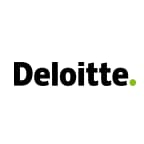Yes! There is Inequality in the Art Market. What can You do about it?

The art market, a realm traditionally associated with exclusivity and luxury, is also marked by significant inequalities. The Deloitte Art Finance Report 2023 sheds light on a disturbing concentration of wealth and influence: a mere 1% of artists account for over three-quarters of the sales at auction. This stark reality raises an urgent question: What actions can we, individually and collectively, take to address and mitigate this disparity?
Understanding the Inequality
To address the issue, it's crucial to first comprehend its magnitude. The Deloitte report highlights a glaring imbalance, with a small fraction of artists and collectors dominating the market. This not only stifles growth but also limits diversity within the art world. The top 100 artists by auction sales from 2015 to the first half of 2023 represented 75% of the total sales value, underscoring the skewed distribution of resources.
The Power of Active Communities
At the heart of the solution is the mobilization and support of active communities. These groups are essential for challenging the status quo and pioneering equitable alternatives. By participating in or supporting these communities, we contribute to a collective effort to democratize access to art, ensuring a more balanced distribution of opportunities and visibility.
Leveraging Technology for Change
Technology, particularly innovations like blockchain and NFTs, holds promise for creating a more equitable art market. These tools can safeguard artists' rights, introduce new models of ownership, and broaden access. However, their potential is fully realized only when guided by ethical principles and a commitment to fairness. Engaging with and supporting tech-driven initiatives that embody these values is a concrete way to effect change.
Supporting Emerging Models and Artists
Direct support for emerging models and artists represents a tangible action against market inequality. This includes investing in platforms that offer fractional ownership, promoting digital marketplaces for underrepresented artists, and contributing to crowdfunding initiatives. Such support helps cultivate a market environment where diversity and inclusivity are valued and promoted.
Advocate for Policy and Cultural Change
Advocating for policy changes and a cultural shift within the art world extends the impact of individual actions. This might involve supporting legislation that benefits artists, endorsing fair compensation practices, and encouraging galleries and auction houses to adopt transparent and equitable policies. Participation in these advocacy efforts amplifies the collective push for a more just art market.
Conclusion: Be Part of the Solution
The inequalities embedded in the art market present a daunting challenge, yet they are not insurmountable. By understanding the issues, engaging with active communities, utilizing technology ethically, supporting innovative models, and pushing for broader changes, each of us can contribute to a movement towards a more equitable and inclusive art ecosystem. The critical question now is not just "What can you do about it?" but "What actions will you take?" Every effort, no matter the size, is a step towards transforming the art market into a space that celebrates and nurtures diversity.
Sources







